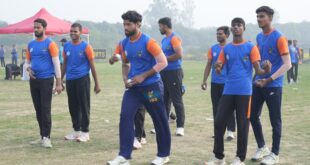
Dr. Seema Javed
Nearly half of the population of the world still lives in malaria endemic countries. Overall Over 90% of all malaria deaths occur in Sub Saharan Africa. Across Asia Pacific, there are a total of 22 malaria endemic countries- Afghanistan; Bangladesh; Bhutan; Cambodia; China; DPR Korea; India; Indonesia; Lao PDR; Malaysia; Myanmar; Nepal; Pakistan; Papua New Guinea; the Philippines; Republic of Korea; Solomon Islands; Sri Lanka; Thailand; Timor-Leste etc.

Among the remaining malaria-endemic countries, Bangladesh has experienced remarkable recent success in the control of malaria. Bangladesh reduced malaria incidence by 93% from 2008 to 2020. This rapid progress prompted Bangladesh to set the ambitious target date of 2030 for the scaled elimination of malaria from the country.
According to a recent study published in “Lancet” Regional health issue of this month. The Bangladesh context is unique to South Asia because its successful public sector malaria control programs have historically not engaged corporate partners (as undertaken in Sri Lanka and proposed in India). This strategy has allowed the country to achieve near-elimination status in 8 of its 13 malaria-endemic regions .
India contributed 83% of the estimated malaria cases and 82% of malaria deaths in the South-East Asia Region (SEAR) in 2020, according to the 2021 WMR. India has managed to sustain the decline in overall burden, with 186 532 cases and 93 deaths reported in 2020.Even though the number of malaria cases in India has been declining since 2002.
The World Health Organization estimates that India still has 15 million cases of malaria each year, with 19,500–20,000 deaths.The Indian government has set a goal to eradicate malaria by 2030. National Framework for Malaria Elimination (NFME) was launched in 2016 to achieve this goal.
Major challenges towards malaria elimination in India are large population size, population movement across regions of different endemicities. After reaching nearly eradication in the 1960s, in India , it had a resurgence with more than 100,000 cases in the mid-1970s ( approximately 6.4 million cases) and stabilizing trend to approx. 2 million cases in the 1990s.
Most national malaria programs now consider elimination to be an attainable goal, and the idea of eradication is once again on the global health agenda.Eradication means disease is reduced to zero world wide. India, Bangladesh and SriLanka all the 3 countries are trying to reach the global target of WHO of eradicating malaria by 2030.
Approximately 18 million people continue to live at risk of infection in Bangladesh.Transmission remains high in three districts Bandarban, Rangamati, and Khagrachari, in the Chittagong Hill Tracts.
A region which in 2021 and 2022 showed increases in malaria incidence. In 2008, the National Malaria Elimination Program (NMEP) and a consortium of NGOs headed by the Bangladesh Rural Advancement Committee (BRAC) redoubled malaria control efforts within the country, combining the mass distribution of long-lasting insecticide nets (LLINs) to reduce bites from malaria-transmitting mosquitoes, in–home review of appropriate net use, rapid point-of-care diagnosis, and prompt treatment with frontline artemisinin-based combination treatments.
 Jubilee Post News & Views
Jubilee Post News & Views





